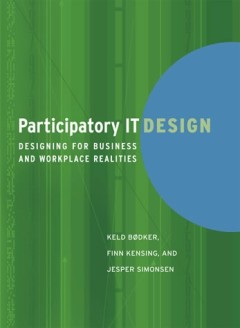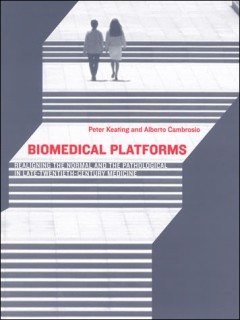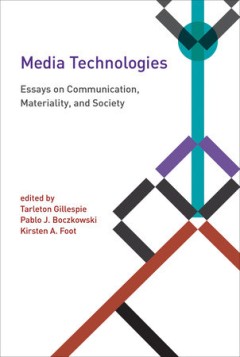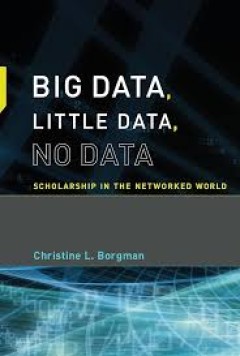Filter by

Aligning modern business processes and legacy systems :a component-based pers…
Distributed business component computing--the assembling of business components into electronic business processes, which interact via the Internet--caters to a new breed of enterprise systems that are flexible, relatively easy to maintain and upgrade to accommodate new business processes, and relatively simple to integrate with other enterprise systems. Companies with unwieldy, large, and hete…
- Edition
- -
- ISBN/ISSN
- 9780262257138
- Collation
- 1 online resource (xxii, 206 pages) :illustrations.
- Series Title
- -
- Call Number
- -

Participatory IT design :designing for business and workplace realities
Title from title screen.Title from book cover on Web Page (viewed Sept. 8, 2005)."The goal of participatory IT design is to set sensible, general, and workable guidelines for the introduction of new information technology systems into an organization. Reflecting the latest systems-development research, this book encourages a business-oriented and socially sensitive approach that takes into cons…
- Edition
- -
- ISBN/ISSN
- 9780262268875
- Collation
- 1 online resource
- Series Title
- -
- Call Number
- -

Biomedical platforms :realigning the normal and the pathological in late-twen…
Since the end of World War II, biology and medicine have merged in remarkably productive ways. In this book Peter Keating and Alberto Cambrosio analyze the transformation of medicine into biomedicine and its consequences, ranging from the recasting of hospital architecture to the redefinition of the human body, disease, and therapeutic practices. To describe this new alignment between the norma…
- Edition
- -
- ISBN/ISSN
- 9780262276870
- Collation
- 1 online resource (xiv, 544 pages) :illustrations.
- Series Title
- -
- Call Number
- -

Media technologies :essays on communication, materiality, and society
Scholars from communication and media studies join those from science and technology studies to examine media technologies as complex, sociomaterial phenomena. In recent years, scholarship around media technologies has finally shed the assumption that these technologies are separate from and powerfully determining of social life, looking at them instead as produced by and embedded in distinc…
- Edition
- -
- ISBN/ISSN
- 9780262319461
- Collation
- 1 online resource (xii, 325 pages) :illustrations (some color).
- Series Title
- -
- Call Number
- -

Designing information technology in the postmodern age: from method to metaphor
Designing Information Technology in the Postmodern Age puts the theoretical discussion of computer systems and information technology on a new footing. Shifting the discourse from its usual rationalistic framework, Richard Coyne shows how the conception, development, and application of computer systems is challenged and enhanced by postmodern philosophical thought. He places particular emphasis…
- Edition
- -
- ISBN/ISSN
- 9780262270885
- Collation
- 1 online resource (xiii, 399 pages) :illustrations.
- Series Title
- -
- Call Number
- -

A case for climate engineering
A leading scientist argues that we must consider deploying climate engineering technology to slow the pace of global warming."Climate engineering -- which could slow the pace of global warming by injecting reflective particles into the upper atmosphere -- has emerged in recent years as an extremely controversial technology. And for good reason: it carries unknown risks and it may undermine comm…
- Edition
- -
- ISBN/ISSN
- 9781461943839
- Collation
- 1 online resource (xxiii, 194 pages).
- Series Title
- -
- Call Number
- -

The war on learning : gaining ground in the digital university
Behind the lectern stands the professor, deploying course management systems, online quizzes, wireless clickers, PowerPoint slides, podcasts, and plagiarism-detection software. In the seats are the students, armed with smartphones, laptops, tablets, music players, and social networking. Although these two forces seem poised to do battle with each other, they are really both taking part in a war…
- Edition
- -
- ISBN/ISSN
- 9780262323253
- Collation
- 1 online resource (xi, 302 pages) :illustrations
- Series Title
- -
- Call Number
- -

Big Data, Little Data, No Data: Scholarship in the Networked World
An examination of the uses of data within a changing knowledge infrastructure, offering analysis and case studies from the sciences, social sciences, and humanities."'Big Data' is on the covers of Science, Nature, the Economist, and Wired magazines, on the front pages of the Wall Street Journal and the New York Times. But despite the media hyperbole, as Christine Borgman points out in this exam…
- Edition
- -
- ISBN/ISSN
- 9780262327862
- Collation
- 1 online resource (xxv, 383 pages)
- Series Title
- -
- Call Number
- -

Gaia's web :how digital environmentalism can combat climate change, restore b…
"This book explores how tools of the Digital Age might be mobilized to solve our most pressing environmental challenges, from climate change to biodiversity loss. It argues that digital technology might accelerate environmental sustainability and that engaging with environmental issues may transform Big Tech for the better, if the sector successfully addresses spiraling energy use, pollution, p…
- Edition
- -
- ISBN/ISSN
- 9780262377683
- Collation
- 1 online resource
- Series Title
- -
- Call Number
- -

The abundant university :remaking higher education for a digital world
"Digital technologies are making the scarcities on which higher education is based disappear. Smith outlines how universities can take advantage of educational abundance to create a system that is more fair and just"--OCLC-licensed vendor bibliographic record.
- Edition
- -
- ISBN/ISSN
- 9780262376341
- Collation
- 1 online resource
- Series Title
- -
- Call Number
- -
 Computer Science, Information & General Works
Computer Science, Information & General Works  Philosophy & Psychology
Philosophy & Psychology  Religion
Religion  Social Sciences
Social Sciences  Language
Language  Pure Science
Pure Science  Applied Sciences
Applied Sciences  Art & Recreation
Art & Recreation  Literature
Literature  History & Geography
History & Geography